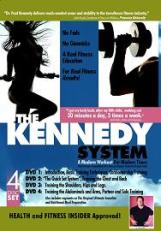A former physical education teacher, football coach and wrestling coach, Dr. Paul Kennedy served as Strength and Conditioning Coach at both Penn State University, where he received his doctorate in the exercise sciences, and Rutgers University following a successful career as a competitive weightlifter. With his extensive educational background as well as his years of practical experience as a backdrop, “Dr. Paul” also hosted and starred in “The Bally Total Fitness Show”, a 13 segment series of half-hour programs covering numerous health and fitness topics from strength training and flexibility to cardiovascular training and nutrition. For over two years, he also appeared weekly on local television programs in Chicago, Dallas, Houston, Miami and Detroit as an in-house expert on various fitness topics and trends.
Wayne Westcott, Ph.D., Research Director at the South Shore YMCA in Quincy, Massachusetts, has this to say about Dr. Kennedy: “He is extremely knowledgeable in his field of exercise science and a true expert in the area of strength training. Dr. Kennedy is a most articulate individual and has the rare ability to explain complex concepts in an easy to understand, educational and motivational manner.”
His latest contribution to the world of fitness, is his world-class fitness ‘educational’ video “The Kennedy System.” Now available to the public, his 4 disk DVD set is a revolutionary way of cutting your work-out time in half, and creating the body you want. Men and women have found tremendous success using his system. Read a testimonial here: http://kennedygirls.wordpress.com/
Education is what Dr. Paul Kennedy is about. Let him save you the trouble.
